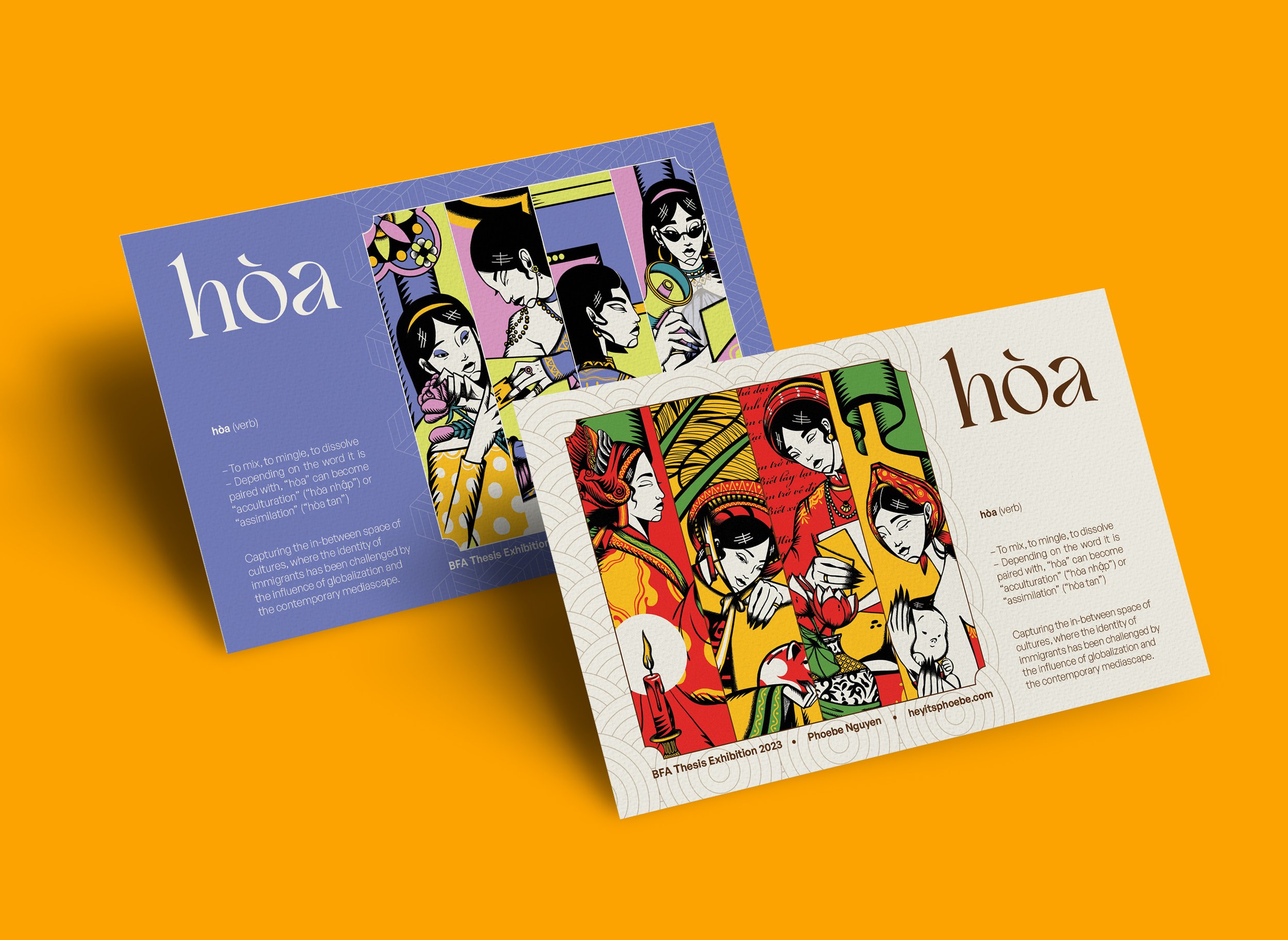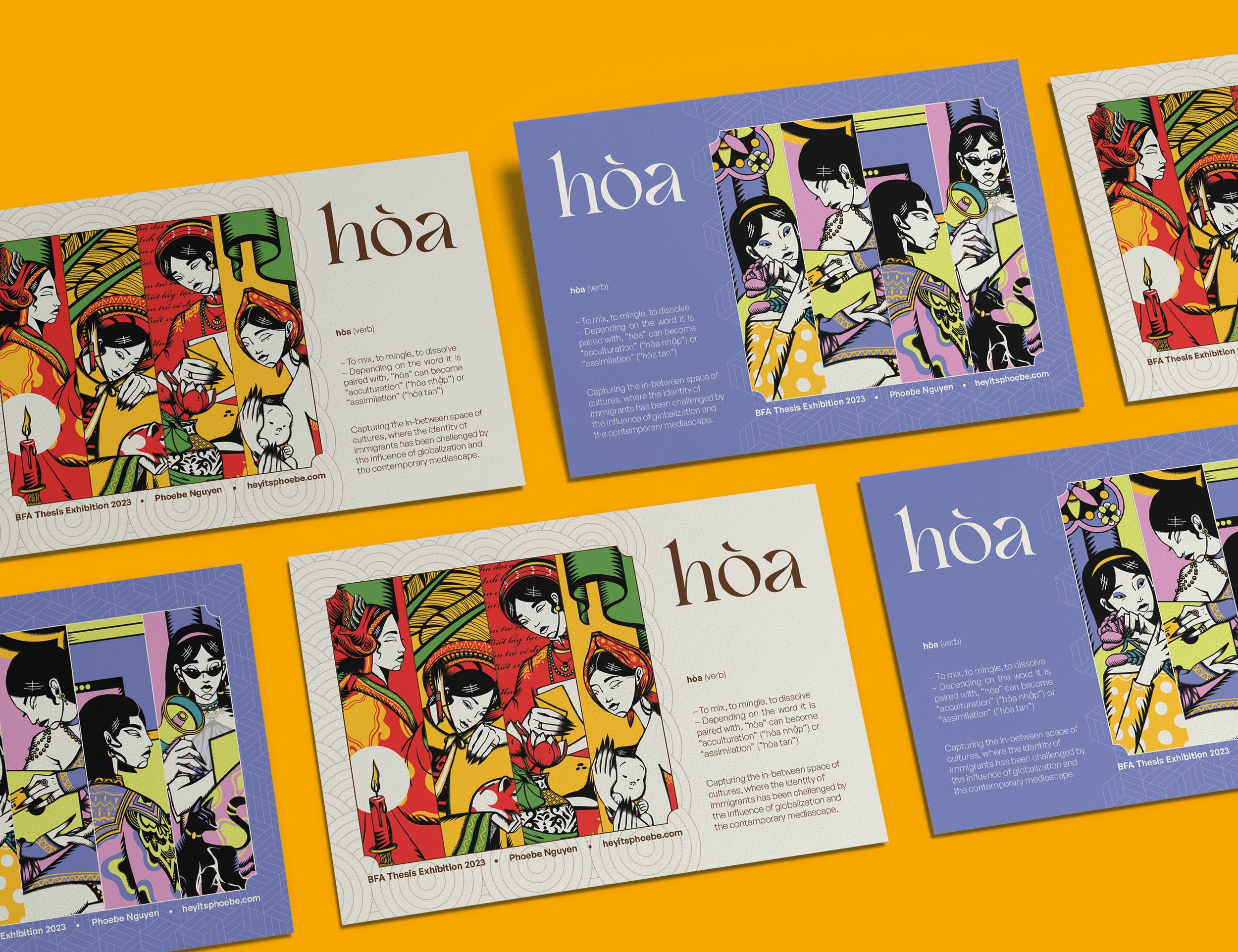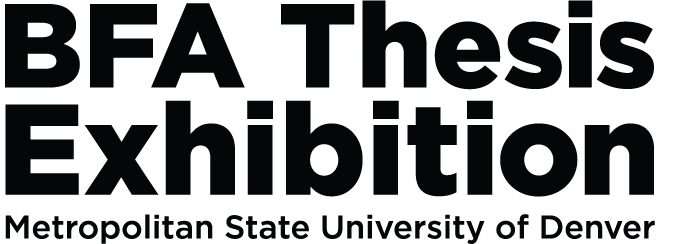hòa
hòa (verb)
To mix, to mingle, to dissolve
Depending on the word it is paired with, “hòa” can become “acculturation” (“hòa nhập”) or “assimilation” (“hòa tan”)
As of 2021, there are approximately 1.4 million Vietnamese immigrants in the United States, representing one of the largest foreign-born groups in the country¹. Starting a new life in America affords them countless opportunities and insurmountable challenges. Similar to other ethnic groups, they often feel the need to discard their native language and repertoire of practices, eventually creating a new identity to make sense of their experience.²
Similar to these findings, when I first arrived in the United States, I created a new identity by changing my name, learning the language, and adapting to the new lifestyle to make myself “fit in” with the culture. Especially with the support of modern technology and contemporary media, the acculturation process has never been easier for young immigrants.
Using Homi K. Bhabha’s theory on the “in-between spaces”³ of culture, the thesis “hòa” resembles a traditional Vietnamese dining room, where the significance of acculturation and preserving national heritage are discussed. Through personal experience and ethnographic research, the findings are visualized by way of a series of digital graphic screens (or “bình phong” in Vietnamese) and a replica of a dining table. Accompanied by augmented reality, “hòa” is an immersive digital experience highlighting how modern technology and media influence culture, identity, tradition, and heritage of immigrants in the United States. By utilizing the mobile devices, the audience can observe the duality of Vietnamese and American culture that has been integrated into the immigrants’ way of living for generations. This thesis aims to initiate the conversation on cultural identity, celebrate the unique values of Vietnamese culture, and create a representative voice for generations of immigrants in America through art and design.
[1] Laura Harjanto and Jeanne Batalova, “Vietnamese Immigrants in the United States,” last modified October 15, 2021, https://www.migrationpolicy.org/article/vietnamese-immigrants-united-states.
[2] Valerie Miller Maloof, Donald L. Rubin, and Ann Neville Miller, “Cultural Competence and Identity in Cross-cultural Adaptation: The Role of a Vietnamese Heritage Language School,” International Journal of Bilingual Education and Bilingualism 9, no. 2 (2006): 255-273, doi: 10.1080/13670050608668644.
[3] Homi K. Bhabha, The Location of Culture (London & New York: Routledge, 1994), 4.
Phoebe Nguyen
She/Her








